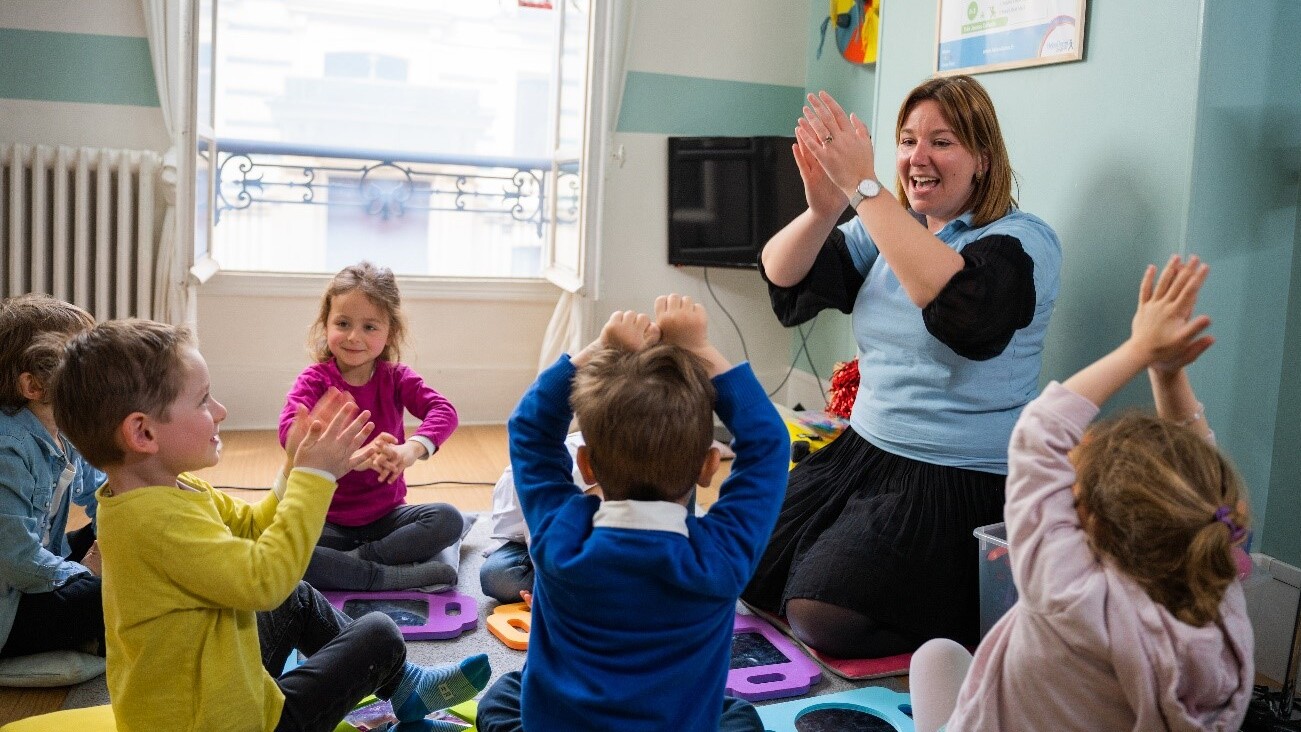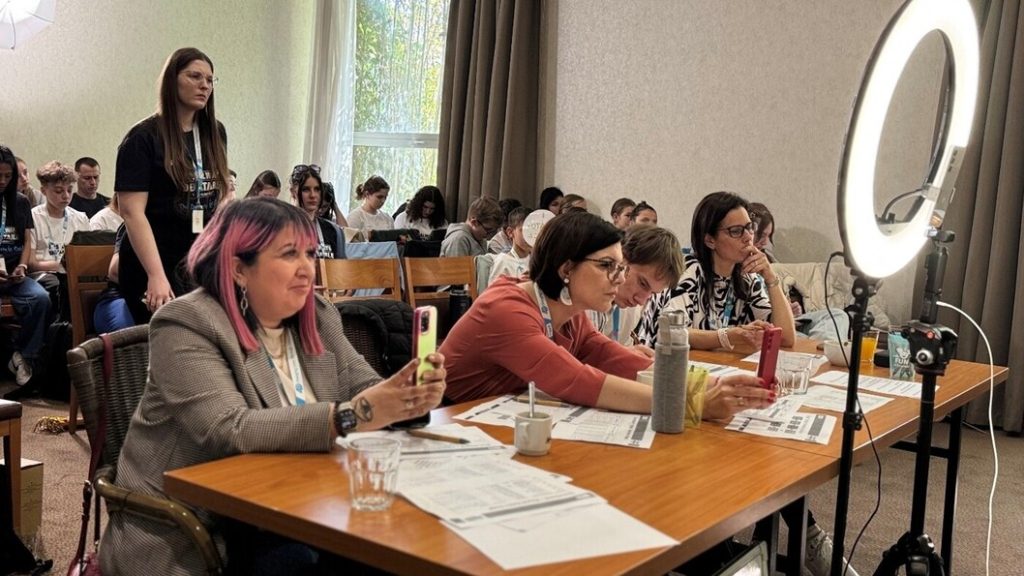In a world where screens have become our windows to knowledge, we at Helen Doron English want to stress the invaluable benefits of traditional classroom learning. This article takes you on a journey through the realm of language learning, emphasising the unique advantages of being physically present in a classroom while acknowledging the supplemental role of online methods. We’ll explore the hurdles of conventional language training and illustrate how our approach reshapes how we teach languages.
Traditional second-language training has often been a rocky road. Despite the widespread recognition of the importance of bilingualism, many education systems fail to produce graduates able to converse in a second language. This is due to various reasons: from the pressure of mastering all language aspects at once, to the lack of individual speaking time and personal feedback, to the anxiety of performance and the focus on mistakes. These elements, unfortunately, often hinder rather than help language acquisition. Our offline language learning methods, however, circumvent these issues. In our classrooms, the emphasis is on supportive interaction and personalised attention.
Enter our methodology, a beacon of hope in the sea of traditional language schooling. Our approach mirrors the natural process of acquiring a mother tongue, fostering communication, and creating a supportive and interactive environment. With small class sizes, each child receives the personal attention they need to thrive. Classroom learning offers students the chance to learn from a qualified teacher and their peers, who are on the same language-learning journey. Research supports this approach, showing that classroom instruction and interaction with other learners are beneficial for children to develop their communicative skills and fluency in the target language.
We place a strong emphasis on teacher training. Our teachers come from diverse backgrounds, some with no prior experience in education or early childhood development, but all share a love for children. Our training programme is designed to equip these teachers with the skills to handle special cases, adjust to group dynamics, and manage challenging situations.
The training involves active workshops where participants engage in games, role-plays, and exercises designed to shift their mindset from an authoritarian teacher to a supportive guide.

Classroom learning offers a unique social environment that is crucial for language learning. It provides structured opportunities for children to learn and practise language skills, access to a qualified teacher, and a chance to learn from their peers. Our courses are tailored to children’s developmental milestones, ensuring that learning is always at the right pace and level.
However, more than classroom interaction is needed for successful language acquisition. We recognise this and encourage children to speak freely, offering praise at every attempt. Our teachers are trained to correct students positively, subtly, and indirectly, which helps keep students motivated and confident in their success.
Our methodology has proven effective in traditional classroom settings, demonstrating resilience and adaptability despite modern challenges. Our teachers have harnessed technology to enhance classroom learning, maintaining the core principles of our methodology.
The principles of Helen Doron English can be applied universally, ensuring that no child is left behind in the journey to learn English. We utilise a range of digital tools to enhance and support classroom learning. These tools, which include a variety of educational apps and games and streaming content that students can access outside of class, supplement the classroom learning experience and allow students to continue their language learning journey outside of the classroom.
In conclusion, our methodology, emphasising daily hearing, positive reinforcement, small group learning, and learning through play, has shown to be a robust and effective approach to teaching English to young learners. As we navigate the evolving educational landscape, our approach holds great promise for the future of English language teaching. This innovative approach is keeping pace with the changing times and setting new standards in language learning. Our emphasis remains firmly on the unique benefits of classroom learning while recognising the supportive role of technology in enriching this experience. At Helen Doron English, we believe in the power of presence, in the irreplaceable value of the classroom setting, and the unmatched advantages of traditional, offline language learning.
References:
Abedi, J., & Lord, C. (2001). Language minority students in American schools: An overview. Journal of Education for Students Placed at Risk, 6(3-4), 153-174.
Firat, M., Noels, K., & Lou, N. (2022). 7. Self- Determined Motivation in Language Learning Beyond the Classroom: Interpersonal, Intergroup and Intercultural Processes.
Heiner, B. & Mueller, T. 2012, Early English: Helen Doron, Academic Supervision and Empirical Evaluation, Katholische Universität Eichstätt – Ingolstadt
Iwamoto, D. (2015). Social activities and interaction in the second language classroom: A review of the literature. Language Teaching Research, 19(3), 289- 310.
Judit, K. Efficacy Assessment of Pre School EFL Learners In Three Hungarian Towns. Education Forschung, 141.
Kostov, J., Tsokova, S., & Cholakova, K. (2020). Positive and supportive language learning environment. Frontiers in psychology, 11, 599326.
Kostov, J., Tsokova, S., Nikolova, R., & Cholakova, K. (2019). Positive reinforcement: Its role in motivation and language learning. Frontiers in psychology, 10, 2128.
Larsen-Freeman, D., & Anderson, M. (2019). Techniques and principles in language teaching (3rd ed.). Oxford University Press.
Maňasová, P. An effective online lesson for young learners within Helen Doron methodology.
Swain, M. (2013). The inseparability of cognition and emotion in second language learning. Language teaching, 46(2), 195-207.








